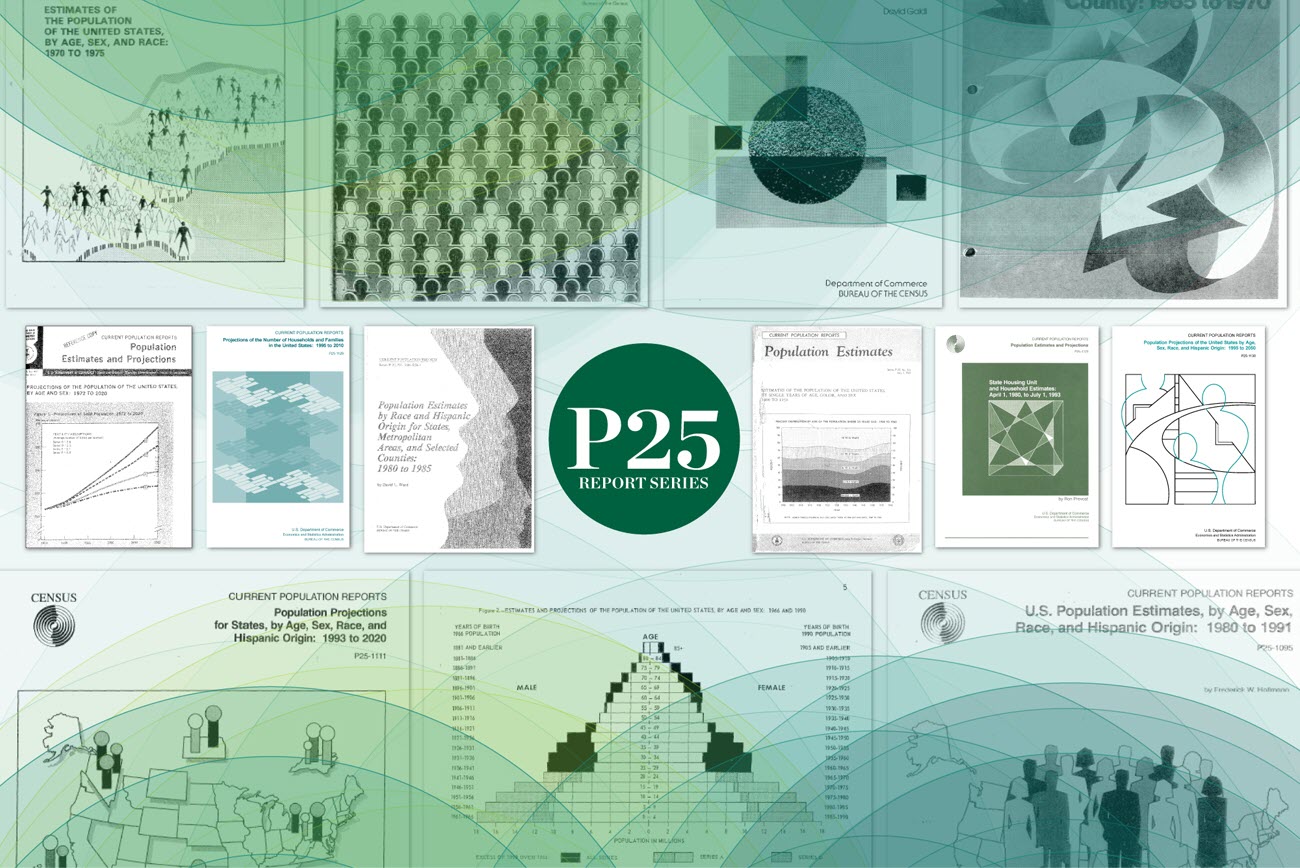Hundreds of Historical Census Bureau Publications Now Available on Census.gov
In a 1947 report, the Census Bureau noted a “huge and steady increase” in the post-World War II birth rate.
A year later, the Census Bureau reported that “the primary factor in the rapid rate of growth of the population in recent years has been the tremendous postwar rise in the birth rate, which is due very largely to the demobilization of men from the armed forces.”
The complete series of P25 reports is now posted on census.gov, and offers historical insight into the nation’s demographic transformation over seven decades.
These estimates of rapid growth in the birth rate were the first signs of the baby boom, the famous period of increased fertility that would last until the mid-1960s, as detailed in a 1965 report on national population estimates.
This early look at the baby boom comes from the Census Bureau’s P25 series of publications on population estimates and projections.
The complete series of P25 reports is now posted on census.gov, and offers historical insight into the nation’s demographic transformation over seven decades.
In their early years, the P25 reports were used primarily to disseminate population estimates and projections data. As data distribution moved to electronic media and the internet, the P25 reports have served as a platform for Census Bureau research on population estimates and projections.
The series contains over 1,000 reports stretching from 1947 to the present. With population estimates at levels ranging from the local to the national, projections of future population trends and more, the publications are a rich resource for those interested in America’s demographic past, present and future.
Some other highlights include:
- A 1947 report estimated that 1 in 10 civilians in the United States was a World War II veteran.
- In 1956, the Census Bureau projected a 75% increase in the college-age population by 1973 as the baby boomers reached young adulthood. The projection was very close to the actual increase of 76%.
- Alaska’s statehood in January 1959 added an estimated 167,000 to the U.S. civilian population, and Hawaii’s statehood in August of that year added more than 600,000.
- Metro-area population estimates published in 1965 show Los Angeles surpassing Chicago in the early 1960s to become the nation’s second-largest metropolitan area.
- A set of population projections published in 1975 projected a population between 252 million and 342 million in 2015, depending on fertility trends in the ensuing decades. The Census Bureau’s most recent population estimates show the July 1, 2015, population at 321 million.
- In the 1980s, the Census Bureau began producing population estimates by Hispanic origin for states and metropolitan areas in addition to other characteristics such as age, sex, and race.
- A 1984 report used alternate assumptions about future levels of fertility, life expectancy and migration to project the U.S. population nearly 100 years into the future. The projections for 2080 range from 191 million in the low scenario – 138 million lower than the current population of 329 million – to 531 million in the high scenario.
- As data dissemination moved online in the 1990s and 2000s, the P25 publications shifted to coverage of more specialized topics such as population dynamics in the Great Plains region. That 2009 report found overall population growth in metropolitan and micropolitan statistical areas coupled with population decline in more sparsely populated Plains counties.
Peruse the complete series of P25 reports on the Census Bureau Library’s website.
Jack Byerly and Demetric Sewell are demographer-statisticians in the Estimates and Projections area of the Census Bureau’s Population Division.
Subscribe
Our email newsletter is sent out on the day we publish a story. Get an alert directly in your inbox to read, share and blog about our newest stories.
Contact our Public Information Office for media inquiries or interviews.
-
America Counts StoryNew Estimates Show U.S. Population Growth Continues to SlowDecember 30, 2019Estimates out today show U.S. population grew 0.5% to 328.2 million from July 2018 to July 2019. The nation is still growing but at a slower rate since 2015.
-
America Counts StoryNet International Migration Slated to Dip to Lowest Levels This DecadeDecember 30, 2019New estimates show that international migration added 595,000 to the U.S. population between 2018 and 2019, down from a high of 1,047,000 between 2015 and 2016.
-
America Counts StoryOlder Population in Rural AmericaOctober 22, 2019A new report shows that more than 1 in 5 older Americans live in rural parts of the country.
-
EmploymentThe Stories Behind Census Numbers in 2025December 22, 2025A year-end review of America Counts stories on everything from families and housing to business and income.
-
Families and Living ArrangementsMore First-Time Moms Live With an Unmarried PartnerDecember 16, 2025About a quarter of all first-time mothers were cohabiting at the time of childbirth in the early 2020s. College-educated moms were more likely to be married.
-
Business and EconomyState Governments Parlay Sports Betting Into Tax WindfallDecember 10, 2025Total state-level sports betting tax revenues has increased 382% since the third quarter of 2021, when data collection began.
-
EmploymentU.S. Workforce is Aging, Especially in Some FirmsDecember 02, 2025Firms in sectors like utilities and manufacturing and states like Maine are more likely to have a high share of workers over age 55.




